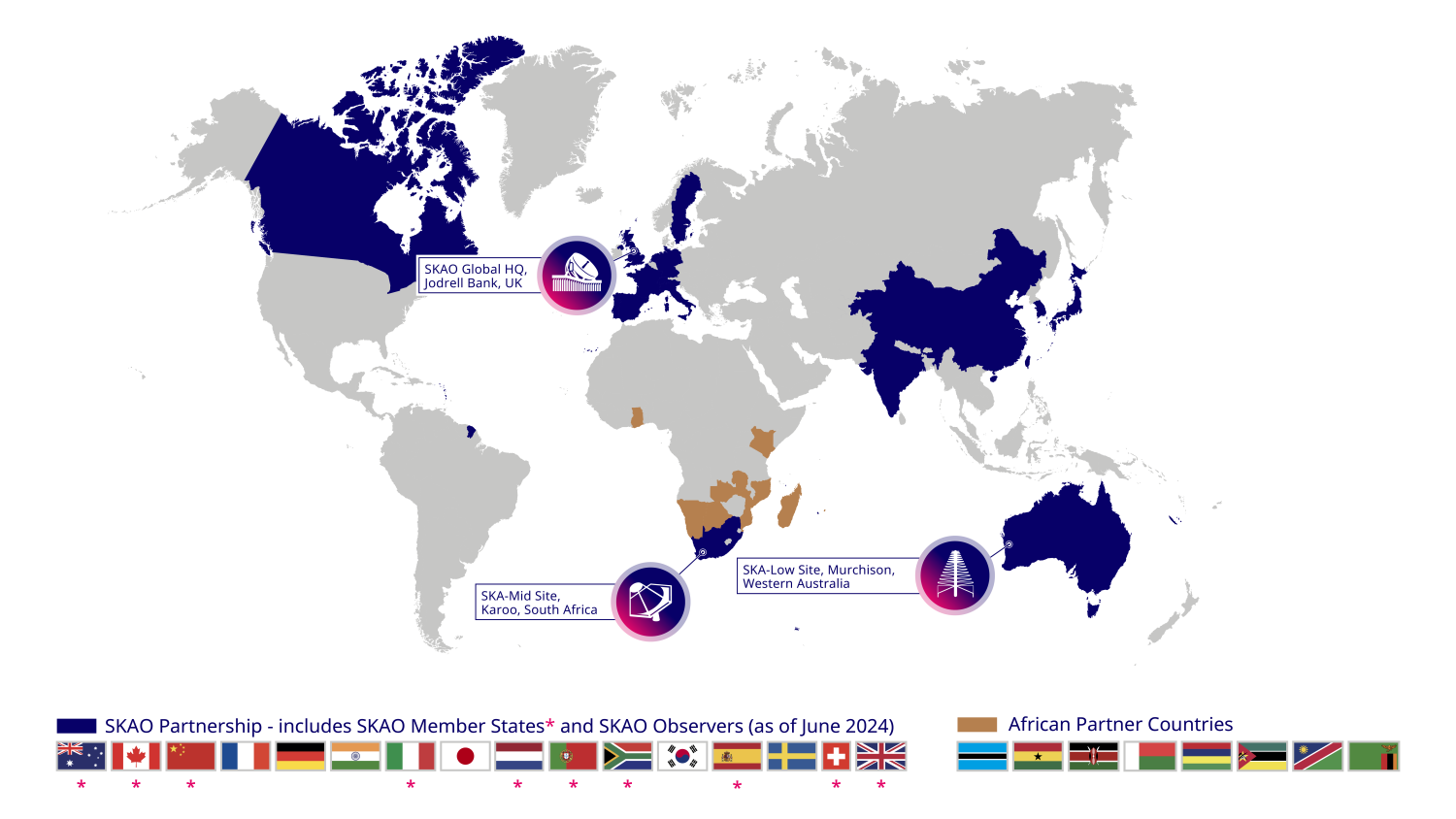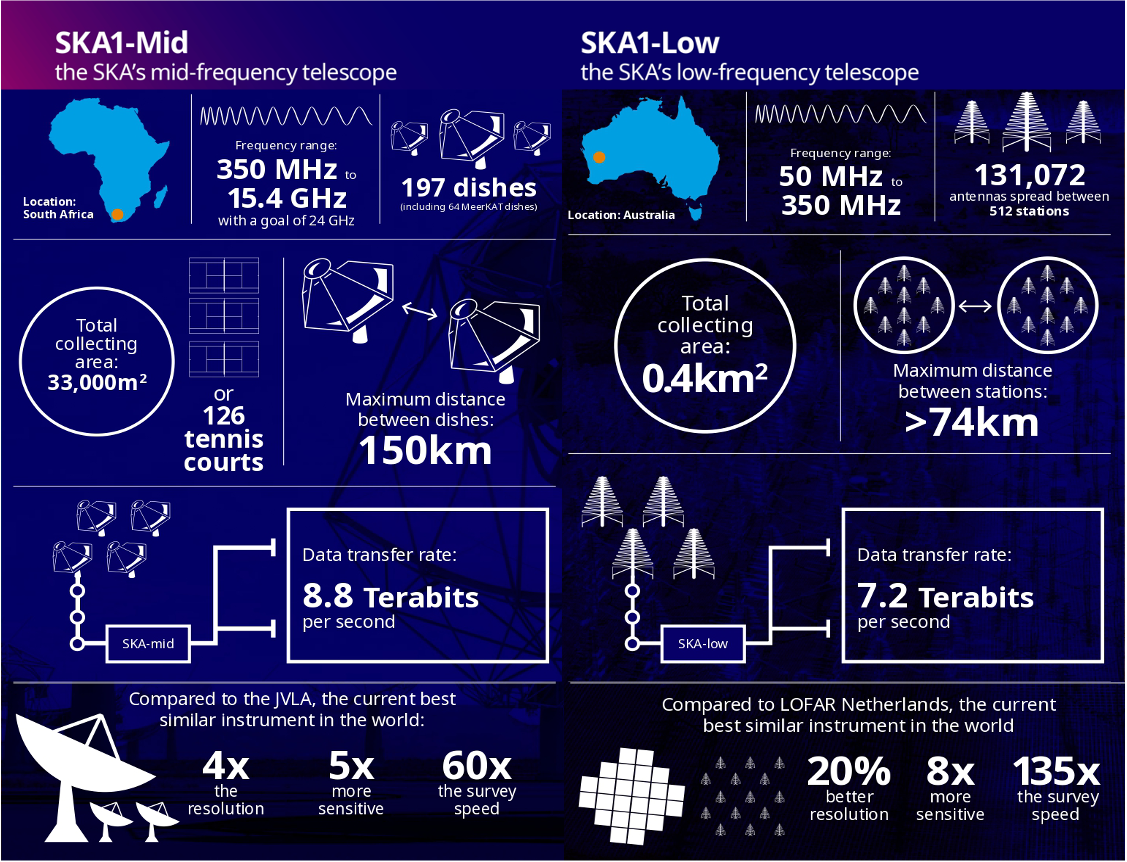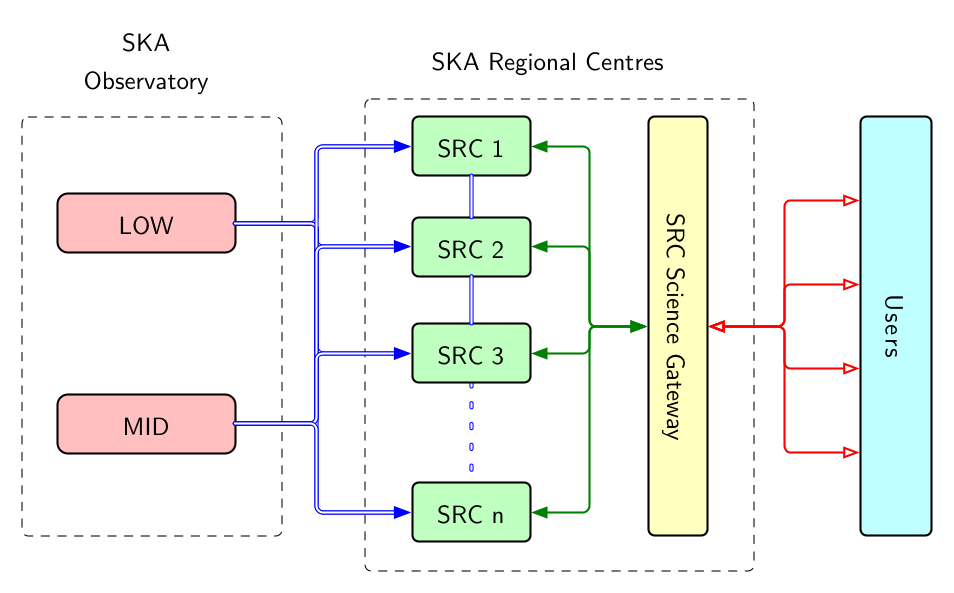The SKA Observatory

World map representing the SKAO membership - Credit: SKA Observatory
The SKA Observatory (SKAO) is an Intergovernmental Organisation (IGO), integrated by several countries from five continents, including Spain among its members. It is included in the ESFRI Roadmap as a landmark research infrastructure. Its main goal is to build and operate two radio interferometers (SKA-Mid and SKA-Low) with a sensitivity up to 8 times higher and a survey speed up to 135 times faster than currently operational similar instruments. This provides the potential for revolutionary contributions to astrophysics, astrobiology and fundamental physics. The SKAO will consist of the headquarters in the United Kingdom, and thousands of antennas spread over distances of up to 3000 kilometres across Africa and Australia. These will be connected via a fibre optic network to the central data processor , and this in turn to centres distributed worldwide that will enable the access, processing, and scientific analysis of the data.

Features of SKA Observatory telescopes – Credit: SKA Observatory
The unprecedented sensitivity of the SKA telescopes will enable astronomers to make advances in fields as varied as the formation and evolution of the first stars and galaxies after the Big Bang, the role of cosmic magnetism, the nature of gravity, or the search for life beyond Earth. The SKAO pursues a series of fundamental scientific goals: understanding the evolution of galaxies and how dark energy works, testing Einstein's theory of relativity using pulsars and black holes, investigating the origin of the large cosmic magnetic fields, studying the Dark Age of the Universe, and searching for complex molecules fundamental to the formation of life. Beyond these examples, the capabilities of the SKA telescopes in terms of sensitivity, angular resolution and wavelength range will open a new window into the unknown.

SKA Observatory data flow - Credits: SKA Observatory
The SKAO will be the international research infrastructure generating the largest amount of public scientific data: its antennas will produce more than 100 times the current Internet traffic, reaching the scale of exabytes. Thus, the SKAO is recognised as one of the Big Data challenges of the next decade. Extracting scientific knowledge from this enormous amount of data that the Observatory will generate constitutes a challenge that requires immense preparatory work. Its scientific exploitation will take place in the SKA Regional Centres (SRCs). The SRCs will be interconnected, forming an international network (SRCNet) that will receive about 600 petabytes per year of calibrated SKAO data. The SRCNet will constitute a collaborative platform that will allow scientists to share their research, facilitating the reproducibility of scientific analysis. The SRCs will be the contact point for users, hosting and facilitating access to the SKAO data, as well as to the tools and computing resources necessary to analyse them.

